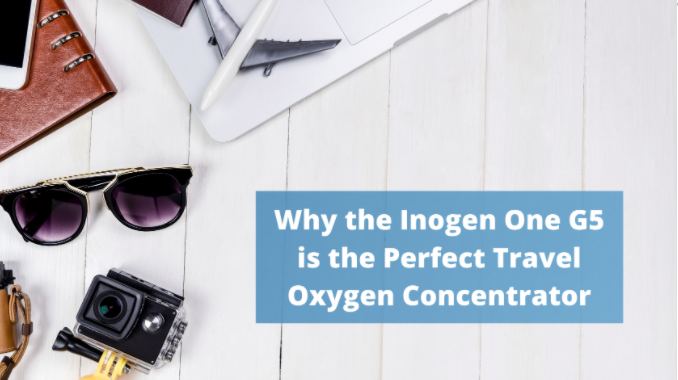
Traveling the world is something that just about everyone dreams of doing at one point or another. Whether you’re planning a road trip, cruise, or a flight, there are endless opportunities available to you. However, if you want to turn your dreams into a reality, you need to be smart about how you plan.
If you have a chronic condition like COPD or cystic fibrosis, this can make it really difficult to pack for a long trip. On one hand, you want to pack as light as possible, but on the other, you want to ensure you have the medical equipment you need to stay healthy and avoid exacerbations. This can be a tricky act to balance if you haven’t done it before.
The good news is that we live in a time of innovation and creativity; If you’re having a problem with something, chances are, someone has already found a solution. And when it comes to medical oxygen, companies like Inogen have been refining and improving their products for years to make their portable oxygen concentrators more travel-friendly.
.png)
Many companies have already labeled the Inogen One G5 “the best oxygen concentrator for travel” and we have to say, we agree! We’ve already labeled the Inogen One G5 “the best portable oxygen concentrator of 2020,” and we strongly believe it would take our top spot for the best travel oxygen concentrator as well.
Flying With the Inogen One G5
Traveling internationally is one of the most exciting things you can experience as a traveler. Not only do you get the opportunity to visit areas of the world that you’ve never been to before, but it can be extremely rewarding working your way through the challenges of international travel.
Something that’s far less rewarding, however, is dealing with medical issues while you’re on the opposite side of the world. If you’re a COPD patient yourself, you know how scary it can be going away from home without having a reliable medical oxygen device to work with.

If you experience an exacerbation while abroad, for example, you may be admitted to a hospital. This can throw a wrench in your plans and put you in a position that you don’t want to be in, especially when it comes to your medical bills.
Many insurance companies, Medicare included, won’t help you pay for medical bills while you’re abroad, and even if they do, you’ll most likely have a lot of hoops to jump through to get what you need. This is why it’s best to avoid overseas medical emergencies as much as possible. Let’s take a look at some of the top benefits of traveling with the Inogen One G5 portable oxygen concentrator.
{{cta('fa8abc2a-1e88-4fa3-82fd-1cb5b9ed43b2','justifycenter')}}
Approved by the Federal Aviation Administration
Flying can be a huge hassle in this day and age. It seems as if just about everyone out there has a horror story to tell about getting stuck in an airport due to canceled flights or being ripped off by an airline for one reason or another. If you’re planning to fly with oxygen, you need to first understand how airlines deal with medical oxygen devices.

The Federal Aviation Administration (FAA) is a government organization that oversees and regulates all aspects of civil aviation in the United States. In their own words, the FAA aims to “provide the safest, most efficient aerospace system in the world.” They achieve this by working with pilots, mechanics, airline operators, and even travelers to make air travel one of the safest methods of travel in the country.
Below are the major responsibilities of the Federal Aviation Administration:
- Promoting safety in civil aviation
- Developing and advocating for new aviation technology
- Operating air traffic control for military and civil aircraft
- Implementing programs that control the environmental effects of civil aviation
- Operating a system of air traffic control
- Working with pilots, flight attendants, and travelers to improve in-flight safety
- And much more
When it comes to medical oxygen machines, the primary concern is safety. Oxygen tanks and portable oxygen tanks are banned by the FAA because they are not safe to use while in the air. However, most portable oxygen concentrators like the Inogen One G5, are approved for in-flight use because they’re lighter and contain no pressurized oxygen.
How to Prepare for a Flight With the G5
While the Inogen One G5 is FAA approved for all major airlines, it’s important to plan ahead of time in order to make sure the process is quick and painless for both you and the airline. Follow the steps below to get you started:
- Get in touch with your pulmonologist several days before your flight. Let him/her know that you are traveling with your supplemental oxygen. If you haven’t already been given one, ask for a doctor’s note or prescription that indicates your need for oxygen.
- Contact the airline that you will be flying with at least a day or two before your flight. Let them know that you will be flying with an oxygen concentrator. They may ask you questions about the model of concentrator you own. You may need to fax a copy of the physician’s note or arrive early to show it to them.
- Before leaving for the airport, pack extra portable oxygen concentrator batteries on your carryon bag. Ensure you have at least 1.5 times the flight duration in batteries. There are many Inogen One G5 accessories available to help you with this.
- Once you arrive at the Transportation Security Administration (TSA) checkpoint at the airport, notify an employee that you will need to keep your oxygen on and need an alternate screening process.
-
Finally, speak with an employee once you arrive at the gate to ensure your oxygen concentrator has been approved.
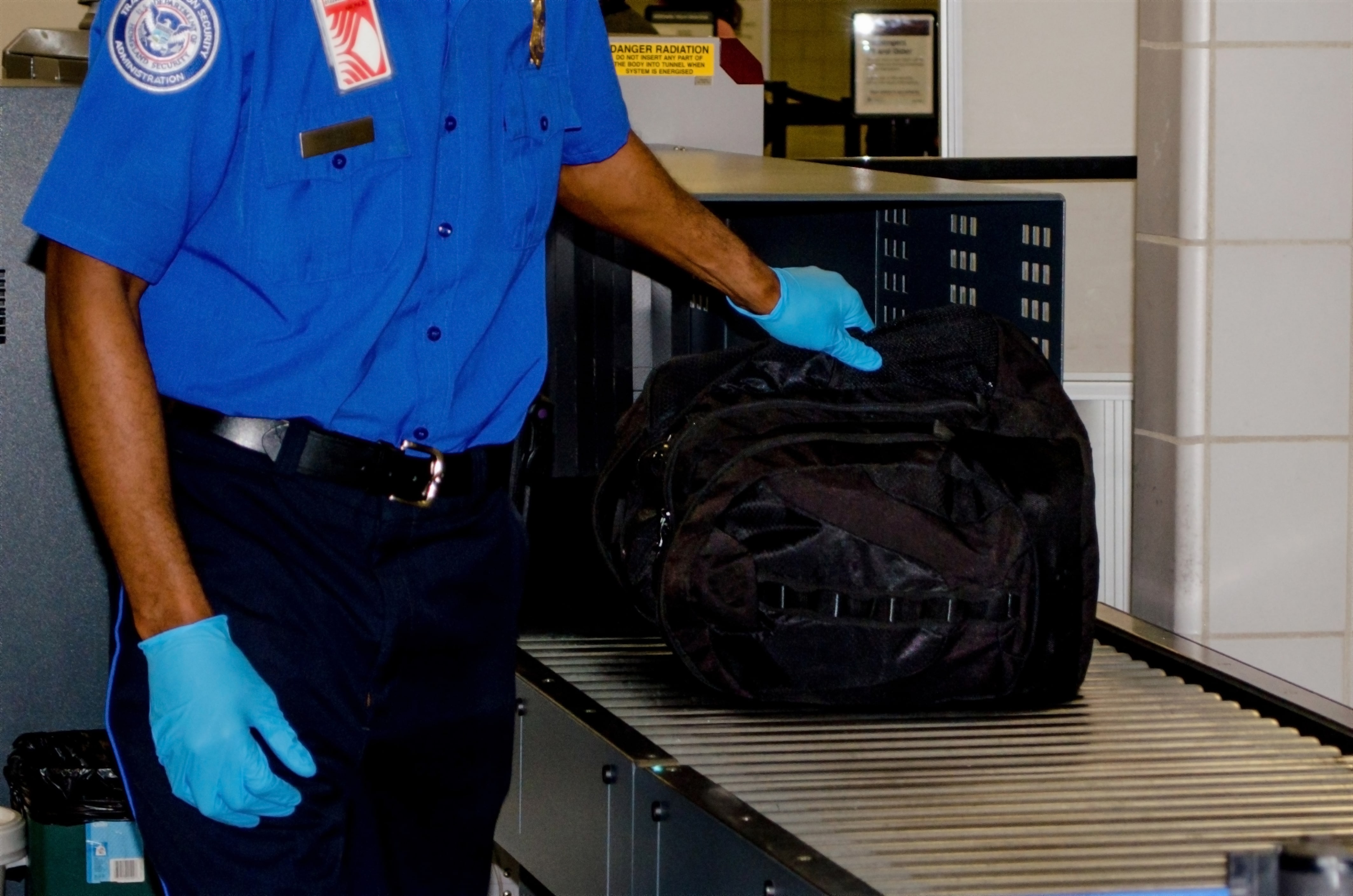
Easy to Carry and Store
Aside from canceled flights and poor customer service, another thing airlines are notorious for is a lack of legroom on their planes. While small children or shorter adults likely won’t have a problem, most people feel that a lack of legroom is the biggest downside to flying. Many people will even pay hundreds of dollars extra to upgrade to first class just for the added space.
As an owner of the Inogen One G5, you can take pride knowing that you own one of the lightest portable oxygen concentrators as well as the smallest portable oxygen concentrator on the market. When the plane is taking off you’ll be able to store your portable oxygen concentrator securely either under the seat or under your shoulder.
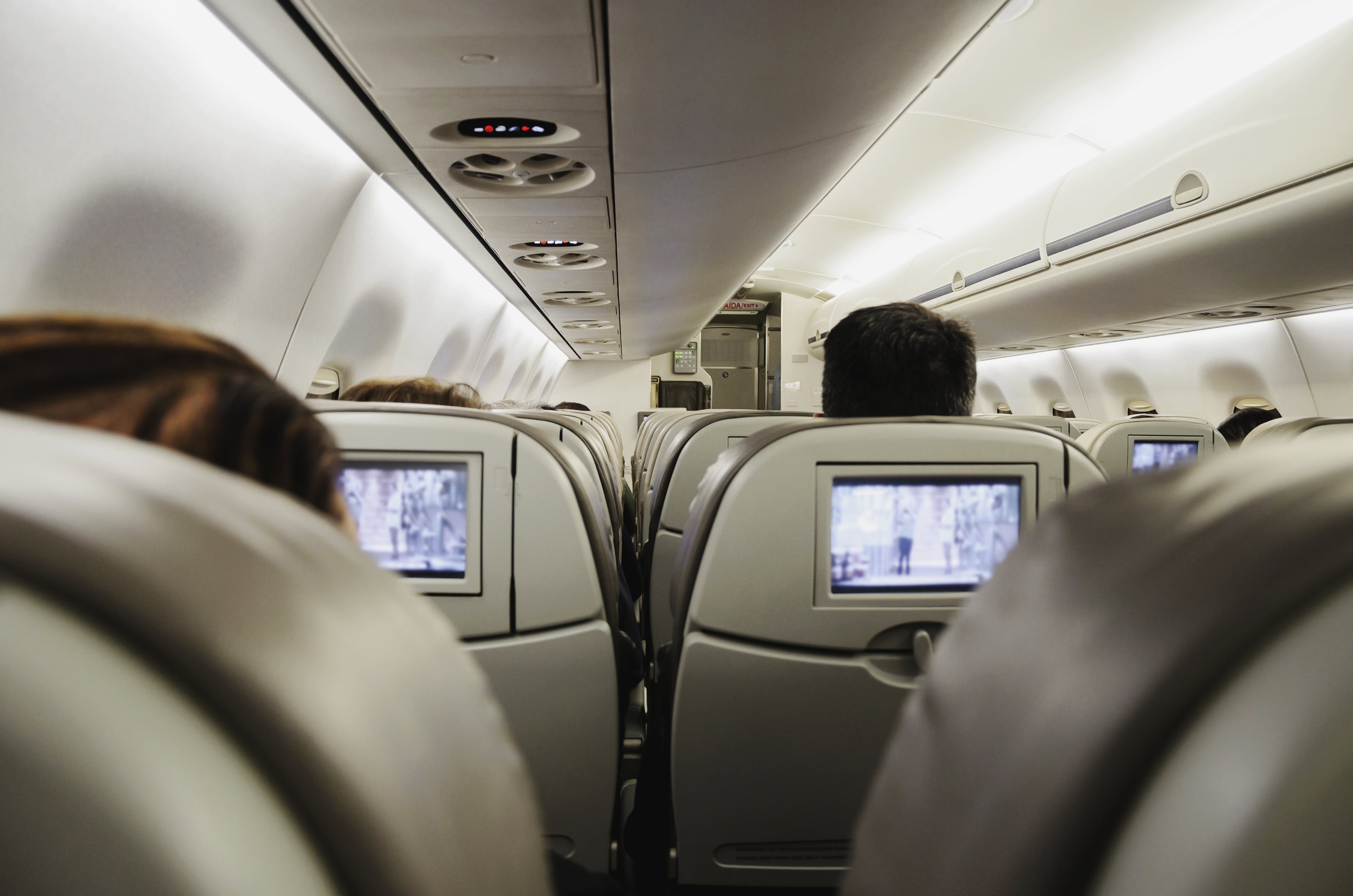
Another concern many frequent flyers have is that they won’t be able to walk down the aisle easily with their oxygen concentrator. Take continuous flow units for example. These devices often weigh over 15 pounds and are meant to be wheeled around rather than carried on your shoulder. It’s unlikely you’ll be able to fit a continuous flow unit in an airplane bathroom where there’s already limited space.
Fortunately, you won’t have this problem with the Inogen G5. This medical oxygen device is just 8.15" H x 7.19" L x 3.26" W and weighs just 4.7 pounds! This is small enough that you won’t have to worry about bumping into people or their seats while walking down the aisle. And if you need to go to the bathroom during your trip, you’ll be able to take it with you.
Simple to Use
Another problem with having a lack of room is that you won’t be able to deal with complicated machinery while in flight. Luckily, the Inogen One G5 is extremely easy to use. One great feature of the G5 is that it has a backlight on the screen. If you ever need to change your flow rate or check your battery life, you can just tap the power button which activates the backlight. This way you won’t disturb people around you by turning on the overhead light.
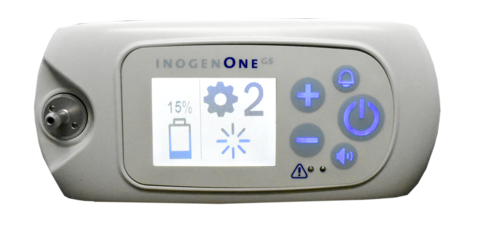
Another option for you to make your Inogen One G5 easier to operate while in flight is to install the Inogen Connect application on your iPhone or Android device. This app allows you to view information about your POC without ever having to look at it. As a result, you’ll be able to save some battery life by not lighting up the backlight. This is some of the information you can view through the app:

- Battery status
- Software updates
- cannula and filter maintenance updates
- Column life
- Troubleshooting tips, FAQS, and the user manual
- Oxygen purity status
The Inogen One G5 was designed with ease-of-use in mind. Since Inogen’s inception in the early 2000’s this company has been set on making their units smaller and easier to use while out and about. As opposed to previous portable oxygen concentrators, doing things like switching the batteries is unbelievably easy with the G5. Simply pop the battery off the bottom of the unit and replace it with a full one.
Taking a Cruise With the Inogen One G5
For those of us fortunate enough to take a cruise at some point in our lives, it’s important to make the most of it. Cruises can last anywhere from a few days to several months, so without being thoroughly prepared beforehand, you might be in for a rough ride.
.png)
One very important thing to note about taking a cruise with COPD is that there are very limited resources in the way of medical supplies and expertise. While most cruise lines require a doctor to be on call 24/7, they can’t account for every person with every type of medical condition. And if an emergency should occur, they may not be able to accommodate the appropriate procedure for your needs. In other words, it’s important for you to do your due diligence and prevent medical emergencies at all costs.
Approved by Most Major Cruise Lines
Just like with airlines, most cruise lines are perfectly fine with you bringing a portable oxygen concentrator aboard. Oxygen concentrators do not pose a threat to passengers like oxygen tanks do and you’ll find that they’re much easier to transport and store as well.
One important thing to note before boarding a cruise ship is that cruise lines rarely provide passengers with oxygen tanks or concentrators. The medical facility aboard the ship may provide oxygen tanks for emergency situations, but you’ll need to consult with them ahead of time if you have any concerns.
How to Prepare for a Cruise With the G5
If you want to take a cruise with the Inogen One G5, there are several steps you should take to ensure your trip goes as smoothly as possible:
- Get in touch with your primary care physician or pulmonologist far enough in advance. While you likely won’t have to show your oxygen prescription when you board the cruise, you may need to have one on you if you visit a doctor aboard the ship
- Most cruise ships have a special needs or access department aboard the ship that are responsible for handling medical-related inquiries. Get in touch with them 30 days prior to your trip to let them know the details of your condition.
- Travel insurance is strongly recommended when traveling. If your vacation is interrupted by a medical emergency, this will cover most of the fees you’d have to pay.
- Have your oxygen equipment inspected by a professional before your trip. Since cruises can last weeks or months, it’s a lot more likely that something will go wrong than when you’re taking a flight.
-
Keep a pulse oximeter handy at all times when you’re aboard the ship. While you’re out and about enjoying your day-to-day activities, you may not realize how far you’re walking, so you should adjust your oxygen output accordingly.
.jpg)
Perfect for Walking and Exploring
Cruises differ from other forms of travel in that it’s not all about the destination — it’s about the journey. When you’re aboard these ships, it’s important that you’re able to enjoy every moment and not just the short amount of time that you’re off the ship.
People have been traveling for decades with portable oxygen tanks, but the problem is that they don’t allow you full freedom while on vacation. Portable oxygen tanks can weigh upwards of 15 pounds, so there’s no way you’ll be able to transport one without using a rolling cart or being bound to a wheelchair for the entire trip.
Alternatively, with the Inogen One G5 portable oxygen concentrator, you’ll enjoy free reign wherever you go. Weighing just 4.7 pounds, you’ll be able to carry the device all over the ship with little more hassle than carrying a small handbag. In fact, many people are surprised to find that they forget they’re carrying it as they’re busy enjoying their time.
Cruise ships can also be crowded, meaning you’ll want a portable oxygen device that’s small and not so loud that it will disturb other guests. So, you’ll be happy to know that the Inogen One G5 is about the size of a tin lunch box. In other words, it’s small enough for it to not to disrupt your daily activities but big enough that you won’t forget it somewhere.
The Inogen G5 is also a very quiet device at about 37 decibels on a flow setting of 2. That’s about the same volume as a whisper. If there are any events on the cruise ship like a movie, play, or concert, you’ll be able to go without worrying that your oxygen concentrator will disturb other guests.
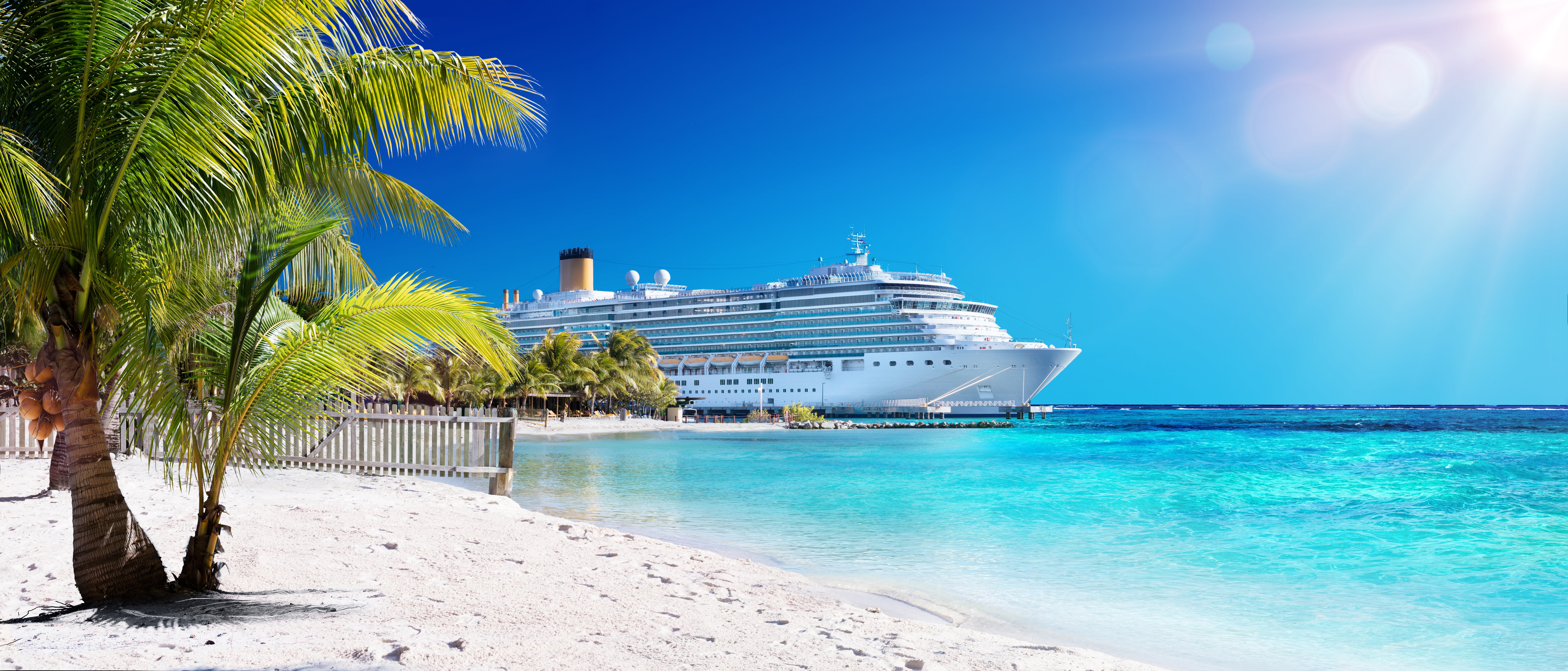
One of the many things that people enjoy about taking a cruise is the excursions. An excursion is a sort of “pit stop” cruise ships take, allowing you to explore a new destination for a set amount of time before boarding the ship again. For most people, this is a great time to relax on the beach, however, if you have to wheel your oxygen concentrator around, this may not be an option for you.
Fortunately, the Inogen One G5 is light enough that you’ll be able to carry it around the beach without any problems. And with Inogen One G5 accessories such as the G5 backpack, you’ll be able to carry all the personal belongings you need like sunscreen, a water bottle, a camera, and much more!
Designed For 24/7 Use
You may be thinking that, because the Inogen One G5 is an electronic device, it can’t be used all day and all night. However, this couldn’t be further from the truth. In fact, the Inogen One G5 was actually designed specifically for people who need oxygen 24/7.

Like most of the newer Inogen oxygen concentrators, the processor inside the Inogen G5 is set to last 20,000 hours. To put that into perspective, that’s about 2.3 years or 833 days of persistent use without needing repairs or replacement parts! However, it’s recommended that you clean and replace your filters regularly as a best practice.
Another way the Inogen One G5 is designed for 24/7 use is that it is CPAP and BiPAP compatible. If you have sleep apnea or another sleep disorder in addition to COPD or cystic fibrosis, the Inogen One G5 is the perfect mobile oxygen concentrator for you.
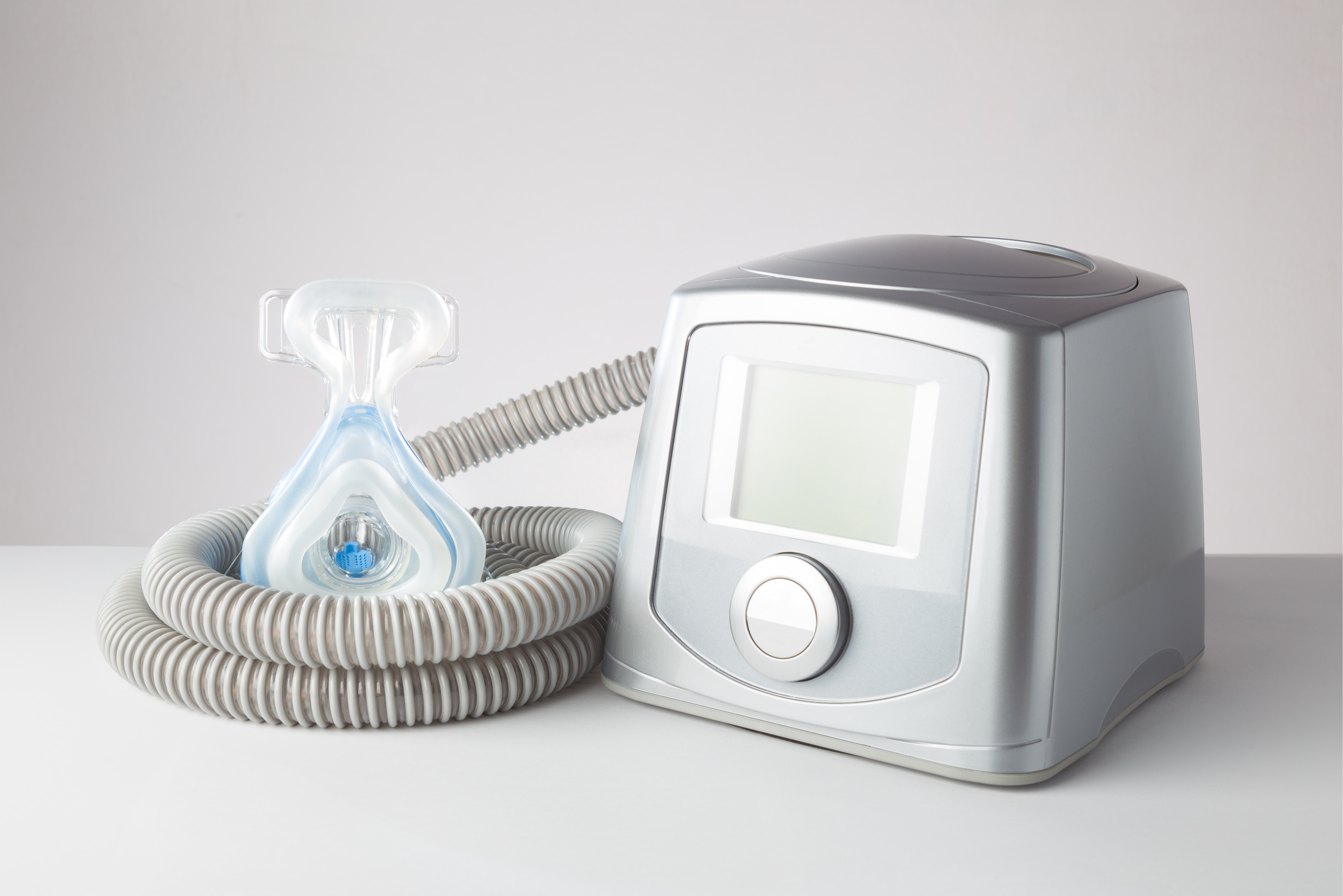
CPAP (continuous positive airway pressure) is a device that increases the air pressure in your throat to prevent your airways from closing while sleeping. Without these machines, people with obstructive sleep apnea may experience poor sleep quality, daytime drowsiness, as well as being at a higher risk of other medical conditions such as high blood pressure, heart attacks, and strokes.
If your doctor has prescribed you with both a CPAP or BiPAP machines as well as medical oxygen, you’ll be happy to know that setting up the two devices is a breeze. And doing so will ensure that you get plenty of restful sleep each night that you’re on the cruise so you can enjoy your vacation.
Taking a Road Trip With the Inogen One G5
Road trips are one of those things that you either love or you hate. People who love road trips are people who love the journey just as much as the destination. These people don’t mind sitting in the car for hours at a time if it means being able to sight see along the way.
But regardless of where you stand in regards to road trips, it’s difficult to find any enjoyment if you’re struggling with your mobile oxygen concentrator the whole time. If your unit is unreliable or difficult to use, you’re going to miss all those little moments that make cross-country trips so special.

Continuous flow portable oxygen concentrators like the SeQual Eclipse 5 or Respironics SimplyGo can provide you with reliable high-flow oxygen therapy while on the road, but these devices are too bulky for most travelers. Most travelers prefer the Inogen One G5 because it provides them with 6 oxygen flow settings, while still being one of the lightest and smallest oxygen concentrators out there.
{{cta('43b79c5e-6bd6-4f02-ac27-2d038d20c146','justifycenter')}}
How to Prepare for a Road Trip With the Inogen One G5
- Have a solid plan of where you are going and when. Some people like to just go with the wind on road trips, but if you know where you’re going, you’ll be able to check the weather ahead of time to see whether or not it will be safe to travel.
- Oxygen concentrators are not waterproof, so if you’re going to be out in the rain, ensure that it’s covered up. Humid air should not cause any problems, however, if moisture begins to build up in the cannula, use a water trap and empty it frequently to prevent inhaling water.
-
Be aware of any changes in altitude during your trip. Most portable oxygen concentrators (the G5 included) start to falter at an altitude above 10,000 feet. Staying below this elevation will ensure you receive an adequate amount of oxygen.

Charge Your G5 Wherever You Go
One of the greatest parts about road tripping with the Inogen One G5 is that you can charge it wherever you go. The AC adapter accessory can be used to charge your batteries when you’re in a hotel or in any other wall outlet you need to use. The DC power cable can be used to charge your batteries in a car, via the cigarette lighter.
If you’re someone who enjoys taking long road trips the G5 is perfect for you because you’ll never have to stop to recharge your unit. You can drive for hours with an infinite supply of oxygen and when you want to stop, you’ll have a full battery to use at your leisure. However, there are several considerations you should take.

First of all, you should avoid charging your Inogen One G5 while the car is off. When the car is on, the car’s battery is being charged, so having your POC plugged in won’t be a problem. However, if the car is off, you may drain the car battery meaning you won’t be able to start the car when you need to.
Second, we recommend fully charging your POC and then running the battery down all the way. While you can leave your concentrator plugged in at all times, your batteries will last longer if they are fully charged and fully depleted.
The Safest Way to Travel
Pulse dose portable oxygen concentrators like the Inogen One G5 are the safest mobile oxygen therapy devices for road trips. As we mentioned earlier, the G5 doesn’t have any compressed oxygen inside it like oxygen tanks do. This is extremely important when driving because compressed oxygen tanks are known to explode or catch fire in certain situations.
-min.png)
If you are traveling with a portable oxygen tank you’ll have to take a number of precautions before leaving. Tanks should never be placed in the trunk of the car and any place they could become damaged in case of an accident. You may need to secure them to the back of a seat or under a seat to prevent injury.
The Inogen One G5 still needs to be secure when you’re driving but there’s no chance of it exploding or catching fire. Since the G5 is so small, you may be able to set it next to you on the seat and rest your arm on it to keep it secure. Unless you’re in a very small car, you shouldn’t have to take up leg room by putting it on the floor in front of you.
Conclusion
When it comes to traveling with medical oxygen, few devices are more convenient, reliable, and safe than the Inogen One G5. The G5 is a pulse dose unit that’s much smaller and lighter than continuous flow portable concentrators and portable oxygen tanks. But at the same time, it provides you with the highest oxygen output in its class.
Another reason to take the G5 with you on vacation is its host of helpful accessories. The custom carrying case and G5 backpack allow you to travel light while the DC power supply helps ensure you have oxygen 24/7, no matter where you are in the world. All things considered, it’s safe to say that the Inogen One G5 earns our pick for the best portable oxygen concentrator for travel.


 So we can find the best portable oxygen concentrator for your needs!
So we can find the best portable oxygen concentrator for your needs!







